|
Commonly referred to as E.cuniculi. As you may have seen from my Facebook page and my blog, my house rabbit Benji developed head tilt just over two weeks ago. (looking on the bright side) The most common cause of head tilt in rabbits is caused by the parasitic infection of E.cuniculi. I have come across E.cuniculi in rabbits before but never in my own rabbits so rather than just talk about Benji’s 28-day treatment plan, I decide to do some further research into this disease and share it with you. whilst we refer to a rabbit as having ‘head tilt’ or E.cuniculi the disease that the parasite causes is called encephalitozoonosis – you can see why we just call it head tilt! The infection affects the spinal cord, the brain and the kidneys. 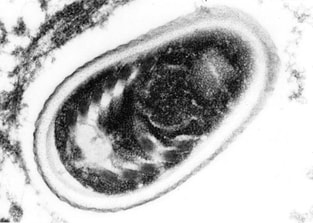 A quick side note here; the information I have gathered has come from papers and studies written by vets, for vets and students. I’ll put some links to those below if you want to have a read. E.cuniculi is a parasitic protozoa. A protozoa is a single celled, microscopic organism. They multiply within their host which causes serious and sometimes life-threatening infections. So how is it spread? The general consensus from the information that I have read agrees that rabbits become infected from ingesting the parasite spores that have been shed in the urine of infected rabbits, including wild rabbits and rodents. Although less common, infection can also occur from inhalation of the spores and from mother to young during pregnancy.  Can humans get this disease? Well… If you have ever heard of zoonotic diseases you may have noticed the zoonosis part of encephalitozoonosis!! So, the answer is yes! But please don’t panic, the only people who are really at risk are those who are extremely immunocompromised. what are the signs? Before doing research for this blog, I thought that the first sign of head tilt was, well head tilt! However, I have since found out that hind leg weakness is a common sign, which Benji does have, something that we had put down to Benji’s age but took him to see a vet anyway and our vet thought was linked to his irregular heart rhythm. If it becomes advanced a rabbit can become paralyzed or roll around uncontrollably, which I can tell you from personal experience working with adoption rabbits, is horrible to see and must be awful for the rabbit. This symptom is thought to be caused by swelling around the parasite in the spinal cord causing damage to the nervous tissue. This damage can not be repaired. There are a few other symptoms and a rabbit may show some or all of them including:
Strangely one study showed that around 52% of healthy rabbits carry the parasite but may never suffer symptoms. It’s still not really understood why some rabbits get symptoms and other don’t. A much smaller percentage, around 6% develop signs of infection and when sever clinical signs develop it is recommended that that the rabbit be put to sleep. What can you do? Whilst there is a test for E.cuniculi it’s not really very useful as I said more than 50% of rabbits seem to have the parasite. The best advice I can find is to quarantine new rabbits from existing ones. Be sure to thoroughly disinfect when using a used hutch. These spores are pretty resistant to environmental changes so a good 1-10% bleach solution is a good idea. 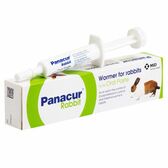 If you just got a rabbit, no matter where it came from, it would be advisable to give it Lapizole (Panacure) for 28 days. You don’t need to get this from the vet, pet shops that sell licenced medication should stock it but there’s no harm in a vet check with a new pet. I know it sounds like a lot but if the rabbit does have the parasite it can kill it off before any symptoms and irreversible damage is done. Not only will I be treating Benji until February, I will also treat my four other rabbits this year. I can tell you now, some will be more trouble than others, there will be blood – Mine! Even if your rabbit doesn’t have any of the parasite there should be no adverse effects from giving Panacure. It would also be wise to wash any greens that have been gathered to feed your rabbits that may have come into contact with wild rabbits, I will keep you updated on my Panacure progress.
Useful links:
0 Comments
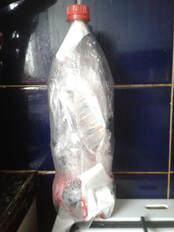 So plastic pollution is big news at the moment as it should be. As consumers we have power over what we use and buy but single use plastic is everywhere and so much of it is not recyclable. With this is in mind we started a non-recyclable plastic collection at the beginning of the year. Using a jar or bottle you collect all your plastic waste that can not be recycled. This way you can actually see how much plastic you are consuming, the tiny plastic film on the new peeler I bought, the wrapper on the celery, that used sandwich bag! It was only a day or so before I started to look not just at the packaging on my own food and products but the pets as well. The dogs have raw bones and frozen nuggets that come in plastic bags. The reptiles have bugs that come in plastic tubs or frozen food in plastic wraps. Even the long stem feeding hay that I get for my two sensitive tummy rabbits comes in a bag which can not be recycled. The Christmas toy I got for my dogs didn’t have a plastic label or plastic wrapping but it did have a plastic tie which attached the toy to the label. It might seem like a tiny little thing but how many tiny little bits are there?! The moment you start paying attention to it you realise that plastic really is everywhere! I had quick whip round my main pet areas; the freezer, the pet room, the treat box etc and in every area there were several products that come in plastic packets or wraps. Some of the packaging, like the feeding hay clearly says on it that it is not recyclable but many other of the products had no information at all. It seems strange to me that there was a complete lack of information. The more you think about it the more overwhelming it becomes and I know that it can seem as though we can’t possibly make a dent in the problem alone, ‘a drop in the ocean’ as they say. But maybe if we all make a small change, if we all ask our suppliers and manufacturers of our pet products “why is this in plastic?”, “can it be recycled?”, “maybe you should collect all the plastic waste from your products and pay to safely dispose of it!” I’m not trying to sound pretentious, I am just as much a consumer as anyone.
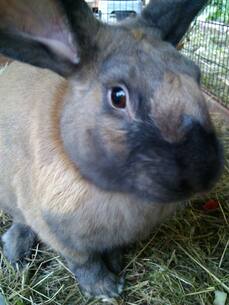 So I had already planed this weeks blog, which will have to be slotted in at another time. On Monday night I saw that our house rabbit Benji had a noticeable head tilt. Not the worse that I have seen on a rabbit but it was unmistakable and he definite didn't have it earlier. I made an emergency appointment at their first opening which was at 4:45 the next day. In the meantime Benji was still alert and eating and moving with direction and purpose, although he veared off to the left as he hopped away from me. I also had to remove the large water bowl as despite having the entire width of the hallway to circumvent the bowl he stumbled through it, leaving me worrying that he might accidentally drown himself in the night! So I gave him a breakfast bowl and covered every conceivable hard object and piece of furniture in a cushions and blankets, effectively turning the hall way into a soft play! Upon seeing the vet, luckily the same vet who had noted his irregular heart rhythm on his visit not so long ago, was very thorough in examining him. She watched him hop around and as the night before he moved with purpose and clear direction, just a slight left incline. In extreme cases rabbits roll around with out any ability to control their movement. She looked with with a light in the dark in his eyes, which we both thought didn't quite look right; and despite some disgruntled ear flicking with his dumbo lugs she managed to look down into his ears, which were clear. The vet agreed with my suspicion that he most likely had E.cuniculi, a parasitic infection that attacks the brain and and nervous system. This infection is the most common cause of head tilt in rabbits. we can only hope that we have caught it early enough for the treatment to be effective. he has began a treatment program of panacur paste in the mouth in the mouth once a day for 28 days. Fingers crossed, I'll keep you up to date with his progress on our facebook. 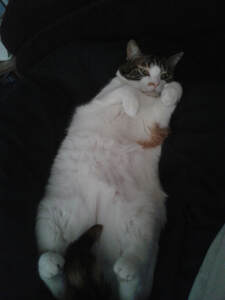 As we start the year, perhaps feeling a little heavy than we did before the festive season its important to remember our pets may follow our habits when it comes to food and exercise. We love to treat our pets, it may be new toys every week, or a treat when you go out, when you come home, when they've been good, when they did a weewee outside; but there are a growing number of pets in the UK that are overweight and obese. It’s important to remember that these conditions are harmful and some of the effects it has on your pet’s body are long and arduous to change and some are irreversible. We should be aware of what our pets ideal weight should be and know whereabouts your pets current weight is (this is also important when you want to buy and use flea and worm treatment). For some mixed breeds it can be hard to know what their ideal weight should be but if you are unsure have a chat with your vet. Many vet practices and even pet shops offer free weight checks. If your new years resolution is exercise more and eat better then take the opportunity to see if your, dog, cat or rabbit could do with the same treatment. It’s not as simple as just feeding your pet less, though many of us will admit that we don’t measure our pets food, we simply fill the bowl! But take the time to check your pet foods recommended feeding guidelines and check if it gives different guidelines for active and low activity pets. Just remember, even if your pet seems very ‘hyper’ or has lots of energy, it’s not the same as being a high activity pet. It may sound obvious but if your pet needs to loose a little weight, make sure you are feeding the amount for their ideal weight not their current weight. There are a few really easy ways that you can help your pet stay active and trim a little off, whilst keeping their brains active too! -Make sure your feeding the correct amount and remember that if you are giving any treats, including dental chews, you will need to reduce the amount of complete feed you give so you don’t exceed your pet’s total intake. -If you don't want to cut out treat all together have a look on the pack to see how many it recommends you can give daily (You may be surprised by how few it is!). -Consider not using or reducing the amount of treats you give, you can even use some of their regular food to give out as a reward, this makes it really easy to make sure your only giving the recommended amount each day. -use a puzzle feeder to stimulate their brain and get them working a bit for their dinner, take a look on our facebook page for videos on how to use puzzle feeders and feeding balls. Here is a broad and fairly simple guide to gauge if your pet is a healthy weight with out the weights, which be more suitable for you if you have a cross breed.
 Cat comfort Diffuser from Beaphar, RRP £18.00: Following on from my review of the Beaphar dog calming collar, I am now trying out several other calming aids, as part of an on-going series of reviews and updates. This time I’m trying out the Cat Comfort diffuser by Beaphar, as the perfect opportunity presented itself. So, on Christmas eve I moved house, I know, I’m a sucker for punishment! Thankfully my cat FoxFairy was able to stay behind with my dad who she likes, so we could get everything sorted; without having the extra worry of whether she was climbing up the walls or escaping out the front door as we brought in the furniture. She has also never lived with my dogs, although she has met one of them before. FoxFairy is generally hostile towards new and unknown things, She usually hides when she hears someone new in the house and growls when someone knocks at the front door. So as per the instructions, I’ve set up the plug in an un obstructed area. Of course, it needs to be in the area that your cat spends most of their time. Like the branded leader, CatComfort uses a synthetic pheromone. This is a marker that cats leave on things when rub their faces on it. It tells them that this thing is familiar and safe, which promotes a feeling of reassurance, reducing anxiety and therefore associated behaviours. The kit comes with the plugin and a bottle which should last around 30 days and is effective in an area of up to 70m2. I’ve plugged in the diffuser about 2 days before we will be moving FoxFairy, this should give it time to fill the room. You won’t be able to smell or taste the diffuser, so do don’t worry about that and as I said when I tried out the Feliway Friends plug in, you must leave the plug switched on. I’ll do 3 more updates to let you know how well (or not) this works. So come back to find out how it has gone! You can also watch my short video updates on my YouTube channel. And of course, I wish you a very happy New year! 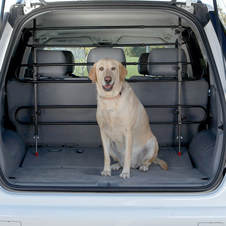 Let’s talk about travel with pets. This is a subject that comes up often with my customers and on social media, and for some pet owners it can be a part of everyday life. Unfortunately, some owners not securing their pets correctly is still an issue that needs discussing. So, I thought it be useful to talk about what the legal requirements specifically are and why securing your pets when traveling is not about you as an owner, or whether your dog is well behaved, it’s about preventing accidents and injuries, including to your pet. Rule 57 of the highway code states “When in a vehicle make sure dogs or other animals are suitably restrained so they cannot distract you while you are driving or injure you, or themselves, if you stop quickly”. 6th Nov 2017 direct.gov. So, what’s the big deal? You are, by not restraining your dog when traveling, putting not only their life at risk but also yourself and others in the event of an accident. You should also know that not securing your dog could land you with a hefty fine of up to £5,000 and it may even void your car insurance! Perhaps part of the problem is the use of the word ‘restrain’ which may sound unpleasant to some. Instead let us use the term ‘secure’. In the same way you secure a baby in a car seat to protect them, you should secure your dog as well. There are several different ways you can do this and there is something to suit every car and family. You may use a dog crate, but if you do, make sure it is an appropriate size for your dog. I would also recommend a non-slip mat rather than a blanket or towel so they don’t slide around all over the place. If you are using a car guard to keep your dog in the boot, make sure it is fitted properly! You don’t want it popping out as you’re driving and for your dog to hop into the front seat, I know more than one person that this has happened to! I use a seat belt adapter for both my dogs. This clips on to their harness and plugs into the seat belt buckle. We leave the adapter in the car so it’s there whenever we need it. I wouldn’t advise you use these on a collar as in the event of a sudden brake, you risk pulling them tightly around the neck. When it comes to very young pups it can be very tempting to have them sit in the lap of a passenger, after all they’re so small and sleepy, but the fact is; if there is an accident there’s really nothing to stop them going flying. It’s far better for them if you put them in a pet carrier that you can secure to the seat with the seat belt, in the same way you do with a baby seat. This is the same for cats, rabbit and guinea pigs. In a pinch you could use a ventilated cardboard box, but make sure it has a secure lid! If you have a cat, rabbit, guinea pig or small pet you should really have a suitable size carrier, I use ones that have an opening top as well as a door. At the end of any length journey, whether it’s a trip to the vets or moving house the most important thing is that you and your pet have a made it safely. 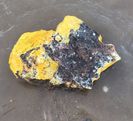 Palm oil pollution – toxic waste to dogs Derived from the fruit of the oil palm, palm oil is an edible vegetable oil; grown mainly in Africa and south America. It is often used as a simple cooking oil but can be also be found in food snacks, cosmetics, soaps and bio-fuels, this is the case in particular with palm kernel oil, aka palm nut oil. It is also used by big ships as a cleaning agent for fuel tanks. So how does it end up on the beach? Well under the current international law vessels are allowed to dump up to 100 litres of palm oil contaminated water into the sea, for each and every chemical tank on board! This can have a huge impact on the marine environment: depleting water of oxygen, killing fish, coating sea bird’s wings and washing up on the beaches with potentially serious consequences for our canine companions. Whilst palm oil alone is not poisonous to dogs, it does have a laxative effect and when eaten can cause diarrhoea, vomiting and therefore dehydration. In extreme cases pancreatitis can develop. Due to the semi solid state that it washes up in, it can also form blockages in the intestines. Some dogs have become seriously ill after ingesting palm oil and have required veterinary treatment. It is important to remember that palm oil that has washed up on the beach is most likely contaminated with other toxic material such as diesel oil from the ships that dumped it (completely legally) as little as 12 miles off shore. So, what does palm oil look like after it has scrubbed a chemical fuel tank, been dumped over board and washed up on the beach that you and your pooch like to stroll down? Well unlike a petroleum oil slick, palm oil forms what looks like waxy blobs or boulders. They will often smell like diesel which dogs seem to love and are typically white, yellow or orange. Whilst there is no evidence that palm oil has caused any fatalities in dogs; a study of 60 dogs who had ingested palm oil found that less than half displayed diarrhoea and vomiting and a minority of the dogs developed serious health complications as a result. If you think your dog has ingested palm oil out on a walk, call you vet for advice straight away! In all likely hood your dog will be fine, but it’s important to be aware of the potential risks and the symptoms as dehydration from diarrhoea and vomiting can be serious. If you notice palm oil on your beach, inform your local authority and snap a pic to share with your fellow dog owners. Washed up palm oil can often spring up after rough, stormy weather, so if you think that there may be risk of encountering it on your walk, keep your dog on a lead. Here are a couple of links to interesting current articles about palm oil pollution in the UK:
This is the first part of a 6 week review on the Beaphar calming collar for dogs. I have been wanting to try out some calming products for dogs for a while now as my dog Ella is an excessive barker and gets very stressed about any change in the house. As you can imagine our pet hotel has a lot of coming and going. I decided to start with the calming collar for a few reasons:
Beaphar calming collar for dogs effectively reduces problem behaviour arising from stressful situations in dogs of all breeds, sizes and ages. Using safe and natural ingredients that are slowly realsed over a period of 4-5 weeks it leaves the dog feeling calm, settled and relaxed, reducing potentially destructive problem behaviour. When dogs are more secure in their environment they are more relaxed thus making them better house companions. keeping dogs stress free will help to prevent excessive barking, chewing, inappropriate urination and can be essential in dogs that suffer separation anxiety. Contains Valerian and lavender which are often used in human healthcare to manage stress and anxiety and have been proven to help reduce excessive barking, chewing, scent marking and other undesirable behaviours. This collar is long acting so is perfect for reducing anxiety during the introduction of new additions to the household, frequent travel or the vet/kennel stays and for use during the party season when there may be fireworks or lots of guests in the home.Once fitted, Valerian will be realsed immediately and the dog will begin to relax within approximately one hour. Directions for use, as it appears on the box: Do not open the sachet until you are ready to use the collar. Fasten the collar ensuring a comfortable fit so that two fingers can be inserted between the collar and neck. If fitted to a growing dog remember to loosen the collar regularly. Cut off any excess collar and dispose of with the household rubbish. For the collar to stay effective it is important it remains next to the skin and does not get covered by any other collar the dog may be wearing. If the collar gets wet, it will continue to be effective once it has dried. If you want to wash your your dog with shampoo, it is best to remove the collar and replace when the dog is dry. Do not use on damaged or broken skin. Week 2 update So we've been using the calming collar for 2 weeks now. Two or three nights a week my mum takes the dogs with her to stay at my nans house. During the first week she noted a noticeable improvement in her behaviour regarding her barking. Now don't get me wrong she does still bark but now it's for an identifiable reason. This product has been really tested as we have had a lot of changes at home at the moment, with my brothers dog who also has two pups staying with us. Ella really doesn't like change and seems terrified of the puppies. She also received a bite to the nose over a ball which left her feeling very sorry for herself! We pushed it even further when we entered a community dog show for the first time. We took all 3 dogs and entered Ella into best veteran and best trick. No luck in the veteran class she spent the whole time making her stress wine noise and a fair bit of barking. There were also 24 of us in the group! But later on in the best trick class there was only 4 of us and I was pretty sure we weren't going to get anything the other dogs were all really great, one was 14 and the other 2 were 7 and 8 so there were no young dogs. Ella did a great job balancing on her back feet holding a treat on her nose! It took a really long time for the judge to choose and we even had to do a second trick, luckily Ella can jump on command! 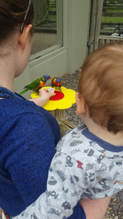 So I was looking for some where not too far away to take my nephew for his birthday. He is only just a year old and my first 2 choices of Bocketts farm and the sealife center were already picked by other family members. Having not had any little ones in family for a while I puzzled to find something that we might all enjoy for the day. Drusillas park in East Sussex seemed to be a good choice and was only £35 for two adults when you booked online (children under 2 go for free). Drusillas has several animal exhibits and walk through attractions as well as kids rides and play areas. I was also pleased to see open picnic areas with plenty of seating and lots of bins, including recycling bins! I know that recycling bins might not seem important on a day out but anyone who has ever spoken to me will know that I do get my knickers in twist if I can put something in the correct bin and I have been know to carry empty packets and cans in bag until I get home. There was plenty of parking and no que to get in but as soon as your through the gate your straight in the exhibit and as we went on a Saturday it was very busy with lots and lots of children and almost as many pushchairs. Now having just got through the gate we wanted to get our barrings and decide where to go but that wasn't really possible as everyone else seemed to think the same thing but no one was really going any where. I wasn't even able to look at any of the exhibits on the way in as I was busy trying to make sure I didn't run over the children who were standing in the way with the push chair. It's important to remember that this is not a big park and it was easily manageable to get around, even if you have little legs. I do think it was good value for money and it was great to be able to buy online before hand, however there were some points I need to raise:
I don't like to end on a negative so I would like to say that with the exception of the above the animal exhibits were not only interesting to look at but seemed to well thought out in terms of their residents welfare and behavioral needs as well as providing a good viewing experience. I would perhaps say that the park is better suited to children over 5 who can really enjoy all the play facilities and if you do visit and see the teletubbie land ask a member staff "why?" Feliway Friends plug in diffuser review part 2 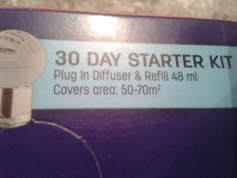 This is the second part of our feliway Friends review, to see the first part of our review check out the video on our youtube by clicking here:www.youtube.com/watch?v=JTGlUWg2A1k So we've been using the feliway friends plug in for nearly a month now and I wish I could say that a peaceful calm has befallen the house, but to be honest, I've not seen any noticeable changes in the two cats behavior. It is important to point out that this newer product is different from the original feliway plug in as it uses a different pheromone in order to help make your cat feel more secure and therefore more relaxed. The only noticeable change that any of us have noticed is that the day after we started using it, Iggle, the black fluffy madam decided to punch my step mum in the face so hard, that for moment she thought she may have a broken nose! The only room where the two cats really interact is in the living room so that's where I put the diffuser. The instructions do say to leave it switched on, but my dad was sure it was making him sneeze! whether or not that's true, the plug in has been turned off several times which may account for why it has been as successful as I had hoped. Now whilst it may be a coincidence, Iggle is not always the most friendly, she has certainly bitten and swipped at them before, this was the first that, with out warning she attacked anyone. As for Fairy, I can't say that she has been any different then normal, she still hisses at Iggle if she looks at her or walks past her. I have found that they seem to be able to come to some sort of mutual agreement to ignore each other, particularly if there are no people around in the living room. I wouldn't discourage anyone from trying Feliway, it may be that we need to give the original a go, the instructions do say that you can use both of them together. It is important to remember that they're not instant cures and all cats are different, so might just need to keep trying. To get the best results you need to have it plugged in, in an area that your cats use most and leave it switched on, the affects may take some time to notice, it's certainly not a magic instant cure but it is certainly worth trying. |
AuthorRebecca, owner and founder of R and R Pet services. Archives
May 2022
Categories |
Thank you for visiting!
Copyright © 2016
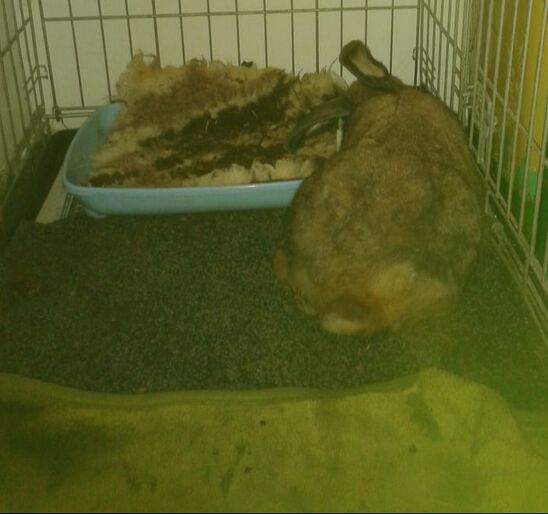






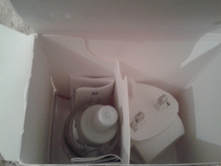
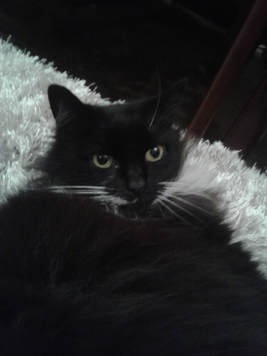
 RSS Feed
RSS Feed